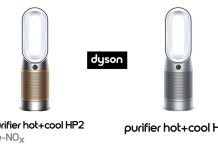CPU Power Usage in Modern Processors
In 2025, CPU power usage is not merely a number listed under TDP (Thermal Design Power). It influences everything from gaming frame stability and thermals to long-term hardware durability and laptop battery life. Evaluating AMD and Intel efficiency requires looking beyond headline wattages and into how smartly that power is managed under variable workloads.
Both AMD and Intel have introduced advanced power management features in their latest architectures—AMD with Zen 5 and Intel with Raptor Lake Refresh and Lunar Lake—each attempting to balance performance-per-watt while maintaining acceptable processor thermals.
Power Efficiency in Desktop CPUs: A Core-by-Core Analysis
Intel’s Performance and Efficiency Cores
Intel’s hybrid architecture separates Performance (P) cores and Efficiency (E) cores, each tailored for specific workloads. When idle or during light tasks, the E-cores operate at low voltages, keeping thermal output and power draw minimal.
Example: Intel Core i9-14900K
-
P-Cores Power Draw: ~14W per core under heavy load
-
E-Cores Power Draw: ~3-5W per core under multitasking
-
Total Package TDP: 125W (Base), peaks up to 250W under turbo
AMD’s Unified Zen Architecture
AMD continues to utilize a uniform core layout where all cores are equal in capability. Instead of hybrid cores, AMD integrates power-optimized silicon and dynamic voltage/frequency scaling (DVFS) to maintain efficiency.
Example: AMD Ryzen 9 8950X
-
Average Power Draw per Core: ~11W under load
-
Package TDP: 120W (Base), boosts to 180W
-
V-Cache Models: Reduced frequency, improved efficiency for gaming scenarios
Processor Thermals: Heat Output Under Pressure
Efficient power delivery doesn’t just save energy—it reduces heat. Excessive thermal output causes thermal throttling, reducing performance over time and placing greater stress on cooling solutions.
Thermal Characteristics Comparison
| Processor | Idle Temp (°C) | Load Temp (°C) | Peak Power Draw | Cooling Recommendation |
|---|---|---|---|---|
| Intel Core i9-14900K | 36°C | 89°C | ~250W | 360mm AIO / Custom loop |
| AMD Ryzen 9 8950X | 33°C | 80°C | ~180W | 240mm AIO or High-end Air |
| Intel Core i7-14700F | 34°C | 85°C | ~210W | 280mm AIO |
| AMD Ryzen 7 8700X3D | 31°C | 74°C | ~125W | Tower Air Cooler (NH-D15) |
Observation: AMD CPUs, especially the X3D variants, generate lower heat due to capped boost clocks, making them more suitable for compact or silent builds.
Laptop Efficiency: Battery Life & Thermal Scaling
Laptop users are particularly sensitive to CPU power usage, as it directly affects battery longevity and thermal comfort during prolonged use.
Intel (Meteor Lake / Lunar Lake Mobile)
-
Process Node: Intel 4
-
Efficiency Cores: Aggressive offloading of background tasks
-
Adaptive Boost: Reduces power when unplugged
-
Battery Life (e.g., Core Ultra 9): ~9–10 hours mixed use
AMD (Ryzen 8000 Series Mobile)
-
Process Node: 4nm
-
Phoenix APU Design: Integrates Radeon GPU with low power SoC
-
Smart Power States: AI-governed workload prediction
-
Battery Life (e.g., Ryzen 9 8945HS): ~12–13 hours mixed use
Verdict: AMD continues to deliver better real-world battery life, thanks to SoC integration and reduced peak thermal output, which results in less frequent fan ramp-up and cooler chassis.
AMD vs Intel Efficiency: Gaming Power Analysis
While desktop CPUs push performance limits, power efficiency remains critical in gaming scenarios, particularly for small form factor PCs and streamers.
| Scenario | Intel 14900K | AMD 8700X3D |
|---|---|---|
| Cyberpunk 2077 (Max) | ~225W | ~145W |
| Valorant | ~95W | ~70W |
| Streaming + Gaming | ~260W | ~170W |
Intel’s power consumption spikes significantly during high-frame-rate gaming and streaming workloads. In contrast, AMD maintains steady thermal profiles, making them attractive for users prioritizing energy efficiency without sacrificing frames.
Platform-Level Efficiency and Long-Term Sustainability
Intel
-
High transient power draw under PL2 (Power Level 2)
-
Requires robust VRMs and high-end PSUs
-
Adaptive Boost maximizes short bursts of performance
AMD
-
Better platform efficiency with less aggressive boost logic
-
Cooler chiplets thanks to chiplet-based design
-
Compatible with efficient mid-range PSUs (650W)
Which CPU Wins on Efficiency?
When comparing CPU power usage and processor thermals, both Intel and AMD offer compelling features, but they differ in philosophy:
-
Intel dominates in short-term turbo performance, ideal for workloads that benefit from high single-threaded bursts.
-
AMD leads in sustained efficiency, lower power draw, and reduced heat, making it the preferred choice for thermal-constrained environments and energy-conscious users.
From gaming PCs and streaming rigs to battery-conscious laptops, AMD Intel efficiency debates will continue to evolve—but for now, AMD holds a noticeable edge in power-per-watt metrics, while Intel still caters to those chasing raw speed regardless of energy cost.




